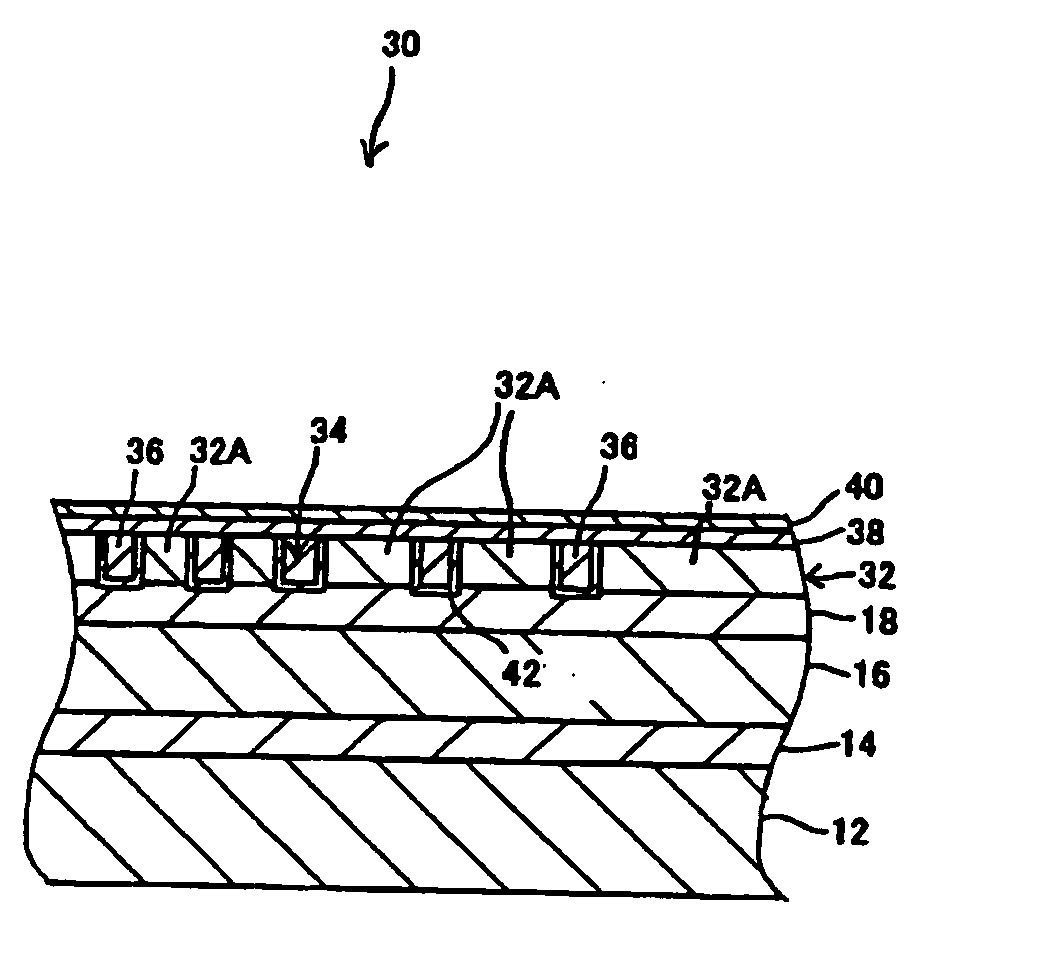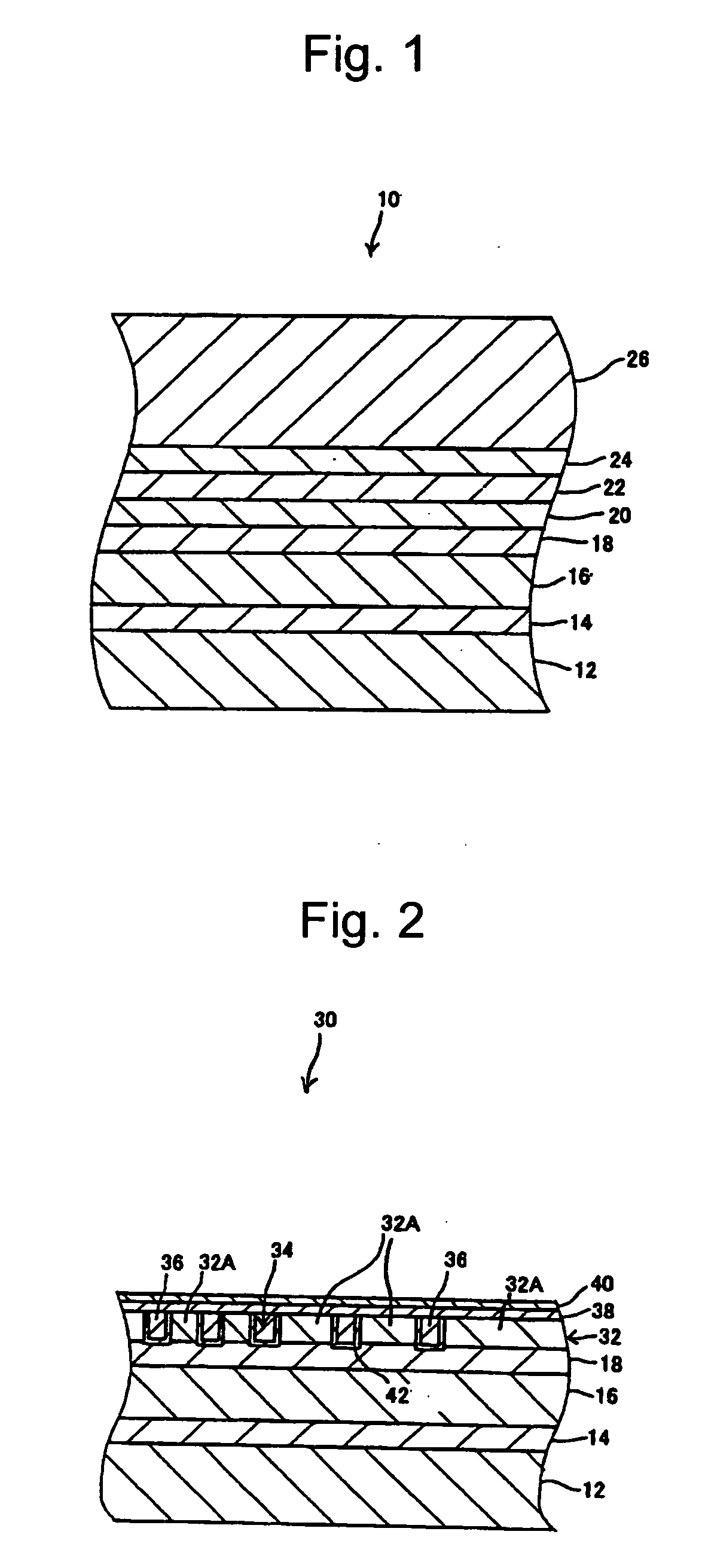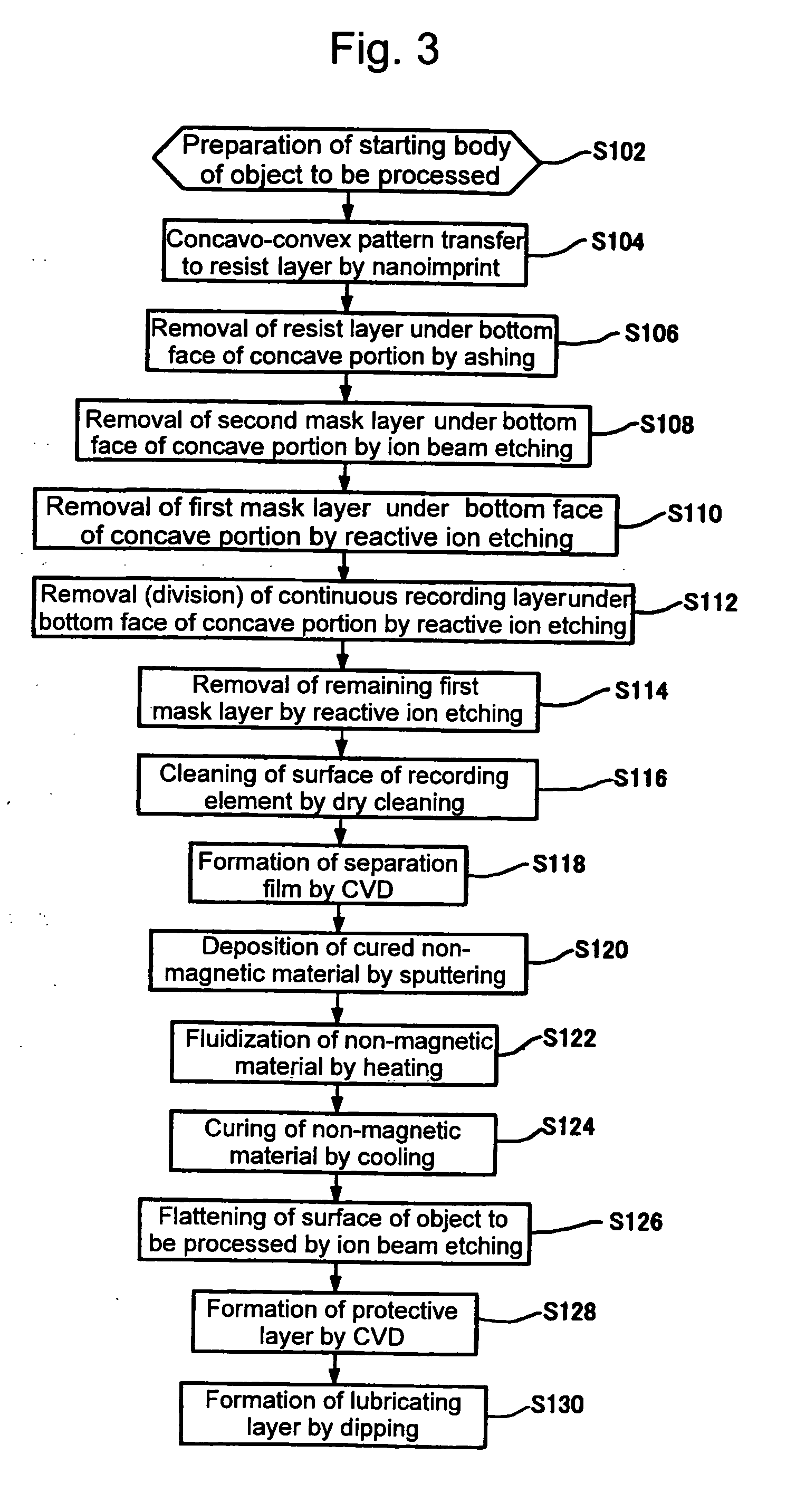Method for producing magnetic recording medium and magnetic recording medium
- Summary
- Abstract
- Description
- Claims
- Application Information
AI Technical Summary
Benefits of technology
Problems solved by technology
Method used
Image
Examples
example 1
[0110] As described in the first exemplary embodiment above, ten magnetic recording media 30 were manufactured by using In as the non-magnetic material 36. Specifically, after In was deposited by sputtering on the surface of the object to be processed 10 including the recording layer 32 formed in a concavo-convex pattern over the substrate 12, the object to be processed 10 was kept and heated in a temperature environment at approximately 200° C. for approximately 5 minutes while being rotated so as to flatten the surface of In. Next, the object to be processed 10 was kept and cooled in a normal temperature environment with the addition of an extremely small amount of Si particles to the surface of In, thereby curing In. Then, Ar gas was radiated approximately perpendicularly to the surface of the object to be processed 10 so as to remove In until the surfaces of the recording elements 32A were exposed. In this manner, the surface of the object to be processed 10 was flattened. Furth...
example 2
[0111] In contrast with Example 1, ten magnetic recording media 30 were manufactured by using an ultraviolet curable resin as the non-magnetic material 36 in place of In. Specifically, after the ultraviolet curable resin was deposited by spin coating on the surface of the object to be processed 10 including the recording layer 32 formed in a concavo-convex pattern over the substrate 12, an ultraviolet ray was radiated onto the ultraviolet curable resin for approximately 5 minutes so as to cure it. Then, Ar gas was radiated approximately perpendicularly to the surface of the object to be processed 10 so as to remove the ultraviolet curable resin until the surfaces of the recording elements 32A were exposed. In this manner, the surface of the object to be processed 10 was flattened. The other conditions were set the same as those of Example 1 above. As a result of measurement of the largest level difference of the surface of each magnetic recording medium 30 obtained in the above-desc...
example 3
[0112] As described in the second exemplary embodiment above, ten magnetic recording media 30 were manufactured by using SiO2 as the non-magnetic material 37. Specifically, after SiO2 was deposited by sputtering on the surface of the object to be processed 10 including the recording layer 32 formed in a concavo-convex pattern over the substrate 12, the resist material was deposited by spin coating on the surface of SiO2 while the object to be processed 10 was being rotated. Next, Ar gas was radiated approximately perpendicularly to the surface of the object to be processed 10 so as to remove the resist material and SiO2 until the surfaces of the recording elements 32A were exposed. In this manner, the surface of the object to be processed 10 was flattened. The Ar gas was radiated without curing the resist material in a flowing state. Furthermore, the protective layer 38 and the lubricating layer 40 were formed to manufacture ten magnetic recording media 30. As a result of measuremen...
PUM
 Login to View More
Login to View More Abstract
Description
Claims
Application Information
 Login to View More
Login to View More - R&D
- Intellectual Property
- Life Sciences
- Materials
- Tech Scout
- Unparalleled Data Quality
- Higher Quality Content
- 60% Fewer Hallucinations
Browse by: Latest US Patents, China's latest patents, Technical Efficacy Thesaurus, Application Domain, Technology Topic, Popular Technical Reports.
© 2025 PatSnap. All rights reserved.Legal|Privacy policy|Modern Slavery Act Transparency Statement|Sitemap|About US| Contact US: help@patsnap.com



